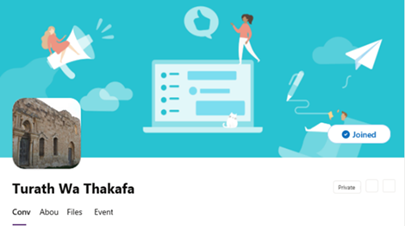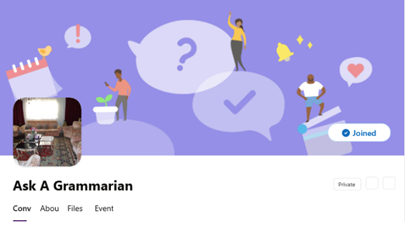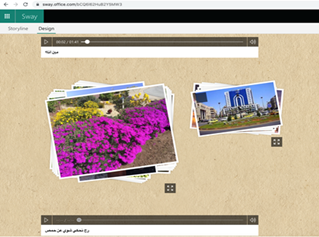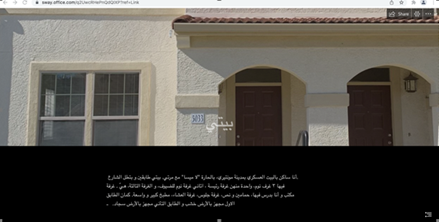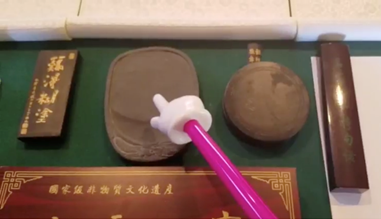Technology Integration in Face-to-Face Instruction in the Post-2020 Pandemic Era: Continuing Innovative Teaching Practices
By Sun Young Park and Kara Mac Donald, Defense Language Institute, Foreign Language Center


DOI: https://www.doi.org/10.69732/UGFH9301
The pandemic has wrought unprecedented disruptions and challenges to education, affecting students and teachers across the globe. Teachers were forced to transition rapidly from face-to-face (F2F) to online learning overnight in early 2020. They sought every training opportunity to get up to speed on using digital technology for the virtual classroom. Employers offered training; such training was also offered through foreign language teaching (FLT) organizations, and through a multitude of grassroots podcasts and webinars. Teachers distant from the physical location of their schools, as well as physically detached from collegial collaboration gained an increased level of autonomy. The reality of 2020 and 2021 required teachers to harness their new and emerging abilities to perform independently in an often chaotic teaching context. Now in 2022, some schools have already been back to face-to-face (F2F) instruction for six to nine months, and others have flip-flopped between online and F2F instruction based on the changing post-2020 pandemic era.
Understanding how FL teachers are using all the technology skills acquired on return to the F2F classroom is important. Are they integrating technology effectively? It is important that their current practice is not solely a transfer of online teaching practices to the F2F classroom out of habit. School leaders, teacher trainers, and teachers need to be able to identify how effectively technology tools are being used on their return to the F2F classroom.
We serve as in-service teacher trainers supporting FLT faculty at a higher education institution. On return to F2F teaching in the post-2020 era, we wondered how teachers’ instructional practice changed for the F2F setting, if at all. So, we conducted a needs assessment of teachers’ perceived technology integration and teachers overwhelmingly had a strong sense and control of the skills needed to innovate with technology in the F2F setting.
In this article, we will share creative approaches for the integration of technology tools in the new normal. We first share the TPACK Model (Mishra and Koehler, 2006) as a tool for readers to assess technology integration in their educational context, be it their own practice or that of other teachers as professional development. Then, we share the most commonly used technology tools integrated in the F2F classroom based on what the teachers participating in the study reported. This can be a good resource for readers unfamiliar with technology integration in the F2F classroom, as well as the characteristics and functions of their use. Lastly, we offer examples of creative applications of technology in the F2F classroom. The effectiveness of the examples shared are connected to the TPACK framework to highlight the effectiveness of technology integration in the F2F classroom post-2020 Covid.
TPACK Model — Assessing Technology Integration
Mishra and Koehler (2006) provide the TPACK framework for effective integration of technology in instruction. TPACK comprises a complex interplay among content knowledge (CK), pedagogical knowledge (PK), and technological knowledge (TK). It serves to explore teachers’ perceptions regarding technology integration across the curriculum. TPACK enables school leaders, teacher trainers, and teachers to understand the ability to incorporate technology in teaching by developing appropriate, context-specific strategies and representations. TPACK involves understanding and identifying 1) the use of appropriate technology, 2) the specific content area, 3) pedagogical strategy, 4) educational context, 5) students’ knowledge development of a particular topic or subject matter.
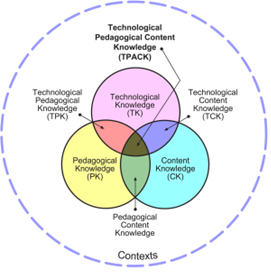
As mentioned above, the educational context is important. Mishra (2019) added this knowledge area [contextual knowledge (XK)] to the TPACK model, pointing out that the context is important as technology resources vary across schools, as well as professional training and IT support. The dotted line in Picture 1 represents the teaching context.
The TPACK model is very relevant for teachers returning to the F2F classroom and adapting their technology practices from online teaching. It provides them an alternative to assess their technology use easily and effectively in the F2F. We used an anonymous online survey to collect teachers’ perceptions and practices on return to the F2F classroom from the spring of 2021 to the winter of 2022.
Technology Tool Integration in the F2F Classroom
The foreign language teachers that participated in the survey reported using technology in instruction at a similar or even increased level on return to the F2F classroom compared to during the pandemic. They employ the learning management system (LMS), Microsoft Teams (Teams), a platform introduced during virtual instruction, and have continued using many of the interactive learning, game, audio-video, and collaboration applications they had used in online teaching. They felt Teams was extremely relevant for the F2F context and wondered why the school did not use it before the pandemic, since it served as a convenient central location for file sharing and text communication and was more convenient than printed handouts and email. One teacher shared, “I didn’t realize we used so much paper before 2020. I’m glad, it’s good to save trees.” It was clear teachers saw little logic in printing out digital files, as it was more convenient for students to access and organize course materials in Teams. Students not only prefer, but need to access content on their phones, tablets, and laptops. For example, a teacher stated, “It’s like the pandemic brought us to the 21st century.”
Teachers developed new habits when teaching online and they held onto these habits when they returned to the classroom. For example, even the habit of using the chat function in Teams was preferred over email as it was more convenient and offered relaxed tailored communication. Table 1 shows the most-used technology tools in the F2F classroom among the teachers that participated in the needs assessment. Teachers make use of a variety of different technologies based on the learning objectives.
| Types | Characteristics | Examples |
| Learning Management System | Disseminating materials, resources, assignments, and collaboration between students | e.g., Sakai, Microsoft Teams |
| Interactive Learning | Generating Interactive quizzes or worksheets that work on MacBook, iPads or any device | e.g., BookWidgets, Thinglink,
Smartboard, OneNote |
| Games | Turning learning experience into games | e.g. Kahoot!, Quizlet, Quizizz |
| Video & Audio | Producing audio and video recording in the courses | e.g., YouTube, podcasting, Screencasts, Stream, Edpuzzle |
| Collaboration | Allowing learners to create, analyze, exchange, and share information in a collaborative fashion. | ClassNote, Padlet, Linoit, Miro, Slack, Yammer, Wiki |
Table 1 – Most-Used Technological Tools Used on Return to F2F Teaching
Examples of Creative Application Use in the F2F Classroom
As they moved back to the F2F classroom, teachers continued using the tools they had been using online but made adjustments to maximize engagement to facilitate learning. In the following section, we share some creative and engaging technology integration in activities and projects that combine language and cultural learning for the F2F classroom.
Yammer
The idea of using Yammer forums, a blog app in Microsoft 365, emerged during virtual instruction, and teachers continued to use it on return to the F2F classroom for activities as it gives students a place to ask questions outside of the classroom on a variety of topics. Teachers in one Arabic as a foreign language department started the following forums: i) Culture and Heritage: for all questions about Levantine/Middle Eastern culture such as idiomatic expressions, ii) Ask a Grammarian, for questions about the Levantine and Modern Standard Arabic grammar, iii) Ask an Expert, for questions to help with strategies for test taking, learning/teaching styles, and requesting a tutor. Using technology as a means for discussion helped students interact with faculty beyond the set curriculum, and they benefited also from the questions other students posted. The department teachers are assigned to forums to monitor, so students’ questions are answered quickly.
|
|
|
The way teachers use the Yammer forums shows their understanding of how to use a technology collaboration tool to share content knowledge (i.e. TCK) on language, culture, and pedagogy with students. The way they choose to explain the answer in the Yammer forums shows their knowledge of different pedagogical approaches (i.e. TPK and PCK), as they choose to answer from distinct angles based on the topic (e.g. bottom-up/top-down, didactic rule, examples, etc.) and/or student (e.g. learning preferences, cognitive styles, motivational orientation, etc.).
E-Scrapbooking, Documenting Target Language Development
Whatever their level, students created an e-scrapbook, a sort of timeline of their language progress over time. Since many may have felt they have not progressed as much as they wanted in the online environment, teachers used an e-scrapbooking project to show how much progress students had achieved and to show the level of language improvement in the F2F classroom. Using Microsoft Sway, students posted written and/or spoken audio and video content about trips, hobbies, and interests in the target language. Teachers also built an e-scrapbook for students to learn about them outside of the classroom. A teacher pointed out: “Students loved to know things about us beyond the classroom” (See Picture 4 and Picture 5). Every other week, students came together in a forum, read each other’s e-scrapbooks, and discussed topics on the different timelines. The activity developed all skills as students used technology to post their writing and speaking, while also practicing reading and listening in a fun F2F context.
|
|
|
The e-scrapbook project shows teachers’ understanding of how a variety of technology tools can be used together on one platform (TPK). The discussions in the F2F classrooms are based on the integration of students’ CK, and the teachers’ CK and TPK in using the reading of e-scrapbooks in the physical classroom structured around students´ target language communicative interaction. In doing so, teachers use the whole TPACK model as the basis for teaching.
Grassroots Cultural Video Episode Project
During virtual learning, teachers made cultural videos at home explaining cultural items and customs. On their return to the F2F classroom not only teachers, but also students built off the practice and began to make videos about cultural content beyond the curriculum. A department chair commented, “Students found it really interesting to learn about teachers’ hobbies, see their homes, and lifestyle.” They also wanted to make videos about Chinese culture to show their interests or hobbies as they related to language learning (e.g. a history buff making an episode on Chinese history, a skateboard fanatic reporting on skateboard culture in China). For example, some students with interest in Chinese calligraphy worked with a teacher to produce an introductory instructional video on the art form. The videos serve as the basis for class discussions and extracurricular in-person culture clubs. The grassroots cultural video project has been so popular that students continue to create and add episodes to the video bank that are available to other classes to watch and learn from through communicative class activities.
|
|
|
The creation of video episodes by teachers implies topic CK, but also their awareness of how video recording tools can change the teaching and learning experiences (i.e. TPK). They merge pedagogy by choosing objects, specific verbal instructions/descriptions, the inclusion of video clips or diagrams, and/or background music to make learning meaningful and comprehensible. In guiding students to create video episodes, they also show their PK as they are not teaching content (i.e. CK) but sharing sound practices, processes, and methods for the student’s peers’ learning. This required teaching students how to consider others´ learning styles, classroom management, and sound lesson planning.
Conclusion
The above activities and projects are models for readers to replicate as they show how teachers integrated technology into F2F instruction in the post-2020 pandemic era, finding technology to be just as meaningful as it had been during virtual instruction. Seemingly, the shift to virtual instruction that was initially viewed as detrimental to teaching and learning in early 2020 has enhanced teachers’ use of instructional technology in 2021 and 2022. Yet, contextual knowledge (XK) also influences technology integration regarding resources available, situational factors and IT support. XK may have significantly limited teachers’ technology use in the classroom. At the same time, teachers in general have been asked to develop and exercise their autonomy as FLTs of a 21st century learning environment. They discovered their strengths and the limitations of their teaching contexts. This post-2020 pandemic climate has also likely contributed to building teacher autonomy by strengthening their knowledge, teaching skills, and situational attitude. To better assess and appreciate what teachers are doing in the F2F classroom with technology, we recommend the TPACK model, with the addition of XK, as it can provide school leaders, teacher trainers, and teachers with guidance to assess effective, innovative teaching practices in the post-2020 pandemic era of digital transformation.
References
Mishra, P. (2019). Considering Contextual Knowledge: The TPACK Diagram Gets an Upgrade, Journal of Digital Learning in Teacher Education, 35(2), 76-78. https://doi.org/10.1080/21532974.2019.1588611
Mishra, P., & Koehler, M. J. (2006). Technological pedagogical content knowledge: A framework for integrating technology in teachers’ knowledge. Teachers College Record, 108 (6), 1017–1054.


